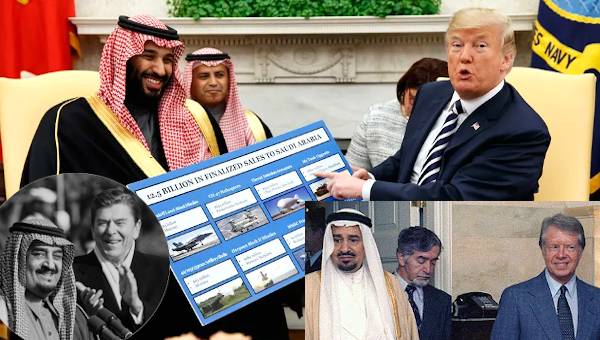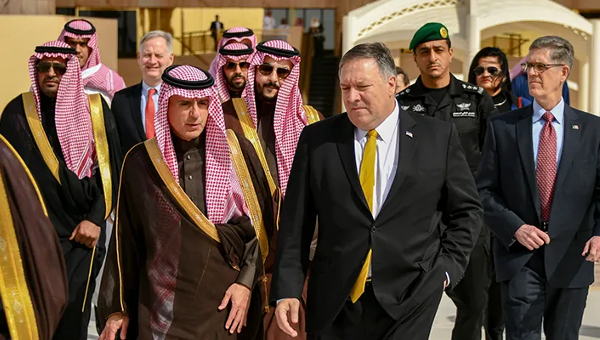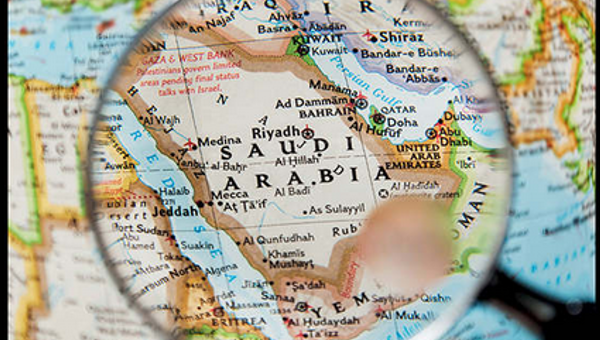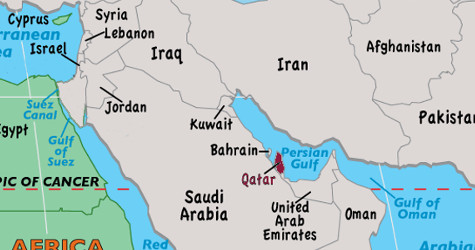Jadaliyya (J): What made you write this book and what are its key themes?
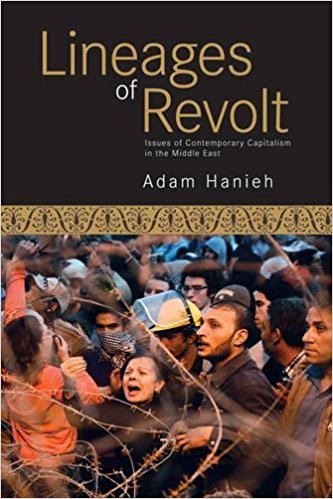
Adam Hanieh (AH): The book was written over the course of 2011 and 2012 and was intended as a contribution to some of the debates that emerged in these first years of the Arab uprisings. I did not want to write another narrative account of the uprisings themselves. This was partly because these were events still unfolding and shifting rapidly from day-to-day; it was also because there had already been several very useful books published along these lines, including, of course, Jadaliyya‘s The Dawn of the Arab Uprisings. Rather, I wanted to present a longer-term view of the political economy of the Arab world in order to contextualize these revolts in the changing class and state structures of recent decades. I also aimed to address a number of myths and misconceptions about the region, which I believed tended to misrepresent the nature of the uprisings.
Along these lines, the book is not structured along individual country histories but rather tries to draw out general themes. There are four key arguments that run through the book:
First, I try to unpack the frequent refrain that we heard in early 2011 from many mainstream analysts and government spokespeople, namely, that the uprisings were simply a matter of dictatorship and political authoritarianism, and that if capitalist markets were allowed to flourish then all would be fine. A striking example of this perspective was Obama’s comment in a major policy speech of May 2011, in which he stated that the region needed “a model in which protectionism gives way to openness, the reins of commerce pass from the few to the many, and the economy generates jobs for the young. America’s support for democracy will therefore be based on ensuring financial stability, promoting reform, and integrating competitive markets with each other and the global economy.” Likewise, then-president of the World Bank, Robert Zoellick, had argued that the revolts in Tunisia occurred because of too much “red tape,” which prevented people from engaging in capitalist markets. In contrast to these perspectives, which continue to dominate the way that the uprisings are discussed, I argue that we cannot separate the political and economic spheres of capitalism in the Arab world. These are fused, and the forms of authoritarianism that are so prevalent across the region are a functional outcome of capitalism itself, particularly through the neoliberal period.
In a related sense, a second key focus of the book is to grasp, in broad outlines, the main features of capitalism in the region. I approach this by tracing the historically structured processes of class and state formation and their interlinkages across different spaces and scales: rural and urban; national, regional, and global. One chapter discusses neoliberal policy in the Arab world and another focuses on agriculture and the rural sector in North Africa. These policies have produced highly polarized outcomes. A tiny layer of the population linked closely to international capital benefits from its control over key moments of accumulation and exists alongside a growing mass of poor, dispossessed populations across rural and urban areas. Networks of production and consumption are integrated into the world market to varying degrees, but have consistently produced high levels of dependence on imports and an exposure to the vicissitudes of the global economy. Authoritarian state structures – distinguished by a particular dialectic of centralization and decentralization that I discuss in the chapter on neoliberalism – have been the essential driver of this lopsided capitalist development.
A third major theme that runs through the book is the manner in which the Middle East has been inserted into the world market and remains a key zone of global rivalries. In this regard, one chapter focuses on the military and political economic aspects of Western policy toward the region. I examine the use of financial instruments such as debt and foreign aid, as well as the range of trade and investment agreements that have proliferated over recent decades. This process has taken place in confrontation and interaction with indigenous social and political forces in the area. The unfolding process reconstituted patterns of state and class, opening the way to the penetration of neoliberal reform. It has altered the patterns of accumulation internal to the region itself, while differentially integrating various zones of the Middle East into the world market. These themes carry through two other chapters that consider the special place of Palestine and the Gulf states respectively. In the case of Palestine, I argue that we need to go beyond considering the Palestinian struggle as just a “human rights” issue, but rather see it as integrally connected to the ways that capitalism in the Middle East has formed under the aegis of Western domination. I believe this has important implications for solidarity efforts and also for how we assess quasi-state structures such as the Palestinian Authority.
The final theme that runs through the book is the argument that we need to take seriously the development of the regional scale over the past period. What I mean by this is that we should critically re-assess the methodology of much academic writing on the region that divides the Middle East up into separate ‘ideal types’ – such as authoritarian, republican, monarchical states – and then proceeds to delineate supposed similarities and differences on this basis. I criticize these approaches for their methodological nationalism, that is, their assumption of the nation-state as the natural and given vantage point from which to consider the political economy of the region as a whole. In contrast, I argue that the vast flows of capital and labour across borders means that processes of class and state formation striate national boundaries; for this reason, the nation-state cannot be understood as a self-contained political economy separate from the ways it intertwines with other spatial scales, namely the regional and global. It is thus impossible to understand processes of class and state formation without tracing the way these cross-scale relations develop and interpenetrate – how these relations become part of the very nature of the nation-state itself. Most important to this reconsideration of the regional scale is the role of capital from the Gulf Cooperation Council (GCC). A chief premise of this book is that the internationalization of GCC capital has transformed the political economy of the region, becoming internalized in the class/state structures of neighboring states. I examine this process both theoretically and through an empirical investigation of various markets, particularly key sectors of the Egyptian economy.
I think all these themes have direct political implications. These include questions such as the impact of the global economic crisis and what it might mean for the politics of the region, our understanding of the relationship between national and regional struggles, how we assess the role of the military in places such as Egypt, the nature of movements such as the Muslim Brotherhood, and whether the orientation toward a so-called patriotic bourgeoisie (ra’s al-maal al-watani) as a progressive force makes any sense in the current context.
J: What particular topics, issues, and literatures does the book address?
AH: The book cuts across a variety of different disciplinary literatures. Within the domains of political science and political economy, I engage with some of the debates around the relationship between state and class formation, and the notion of civil society. The book argues against institutionalist perspectives that treat the state as a disconnected, all-dominating ‘thing’ rather than as a social relation formed alongside the development of class. As I have pointed out above, I attempt to show that the authoritarian guise of the Middle East state is not anomalous and antagonistic to capitalism, but is rather a particular form of capitalism in the Middle Eastern context. This necessarily involves dealing with debates around the nature of class itself, and here I attempt to advance a non-reductive account of class that both avoids the standard Weberian accounts of class as simply a category of income, status, or ‘interest groups,’ and simultaneously guards against economistic views that tend to set up class as an abstract category shorn of its particularities. This means, for example, that it makes little sense to speak of class in a concrete sense without also acknowledging that it is simultaneously gendered as it forms. Moreover, in the Middle East context, as well as globally, class formation cannot be understood without tracing movements of people across and within borders – it is thus also marked by distinct and concrete relationships between geographical spaces. There are also various forms of labour exploitation that take place within both rural and urban sectors. These processes need to be considered concurrently if a full picture of class formation is to be grasped.
I try to situate these processes within the context of the world market, and this inevitably means engaging in the debates around theories of imperialism, the particular role of the United States within the global economy, and the nature of emerging powers such as China and Russia. A very interesting and wide-ranging debate has raged over the last two decades around these issues within the wider political economy/international relations literature, and I strongly believe that much writing on the Middle East is not sufficiently attuned to these questions at a theoretical level. Given that our region is arguably the most important zone of the global economy in which the various rivalries and inter-dependencies of global powers are played out, I think it is striking that little attention is shown to these questions beyond merely descriptive accounts often based upon rather superficial assumptions. I am particularly interested in how these global factors intersect with the form of social relations at the national and regional scales – and how these social relations, in turn, help to shape the global.
J: How does this book connect to and/or depart from your previous research?
AH: My previous book, Capitalism and Class in the Gulf Arab States, follows a similar methodological and theoretical perspective, although focused particularly on the six GCC states. This earlier book made some tentative arguments around the importance of internationalization of Gulf capital for the Arab world, and I try to flesh this out with a deeper empirical investigation in Lineages of Revolt. I feel that often the role of the Gulf is looked at through the lens of religion, sectarianism, or geo-political questions, rather than located in the way that the Gulf’s position in the region has changed over the past period. The role of the Gulf states needs to be incorporated into any assessment of neoliberalism in the Arab world. The dramatic restructuring of class relations that occurred in tandem with neoliberal reform not only enriched national capitalist classes backed by authoritarian states, but also acted to strengthen the position of the Gulf states within the wider regional order. These patterns are not separate from the Gulf’s existential link with U.S. power – both represent different modalities of the way that the Middle East is inserted into the world market.
In this manner, the book also reflects a long-standing interest in theories of neoliberal capitalism and its impact on the Arab world. In the book I explore the specificities and similarities of neoliberal reform processes across different zones of the Middle East, in particular North Africa and the Palestinian West Bank. One of the things I have emphasized in the book is that this is not just a question of capital and the state; it is also closely connected to forms of labour exploitation and, consequently, migration. There are ongoing, massive flows of people across the region, which make the Middle East one of the most important sources and destinations of migration in the world today. These are closely related to the processes of class formation I analyze in the book, and carry important implications for political and social movements in the region. Along these lines, I have drawn upon my research interests on labour migration within and to the Middle East.
J: Who do you hope will read this book, and what sort of impact would you like it to have?
AH: I hope the book will be of use to people interested in the political economy of the Arab world and that it helps to shift the ways these issues are typically framed in popular and academic discourse. For those people who may be experts on individual countries or sub-regions of the Middle East, the book will hopefully provide some food for thought on how the wider regional and global contexts shape national processes. Part of the motivation for writing this book was also a desire to engage with people working on wider political economy issues, but who may not be that familiar with the Middle East situation.
Many of the questions that inspired this book draw upon experiences over the last decade or so in various campaigns and solidarity movements around Palestine and other struggles in the Middle East. The book is very much informed by these political debates, not least in the way that I attempt to integrate the question of Palestine into the wider regional political economy. In this sense, a lot of what I write in the book reflects a collective thinking-through and shared experiences with many very inspiring people across the world, rather than any particular individual endeavor. I would be very pleased if the book gives something back to these movements, and I have tried to write it in such a way that it can be useful to activists in the Middle East, or solidarity movements outside the region. •
This interview was conducted by the editors of Jadaliyya, where it was first published.
Excerpt from Lineages of Revolt:
Issues of Contemporary Capitalism in the Middle East
From Chapter One
Conventional accounts of political economy in the Middle East tend to adopt a similar methodological approach, which begins, typically, with the basic analytical categories of “state” (al-dawla) and “civil society” (al-mujtama’ al-madani). The former is defined as the various political institutions that stand above society and govern a country. The latter is made up of “institutions autonomous from the state which facilitate orderly economic, political and social activity” or, in the words of the Iraqi social scientist Abdul Hussein Shaaban, “the civil space that separates the state from society, which is made up of non-governmental and non-inheritable economic, political, social and cultural institutions that form a bond between the individual and the state.” All societies are said to be characterized by this basic division, which sees the state confronted by an agglomeration of atomized individuals, organized in a range of “interest groups” with varying degrees of ability to choose their political representatives and make demands on their political leaders. The institutions of civil society organize and express the needs of people in opposition to the state, “enabling individuals to participate in the public space and build bonds of solidarity.” The study of political economy becomes focused upon, as a frequently cited book on the subject explains, “strategies of economic transformation, the state agencies and actors that seek to implement them, and the social actors such as interest groups that react to and are shaped by them.”
A conspicuous feature of the Middle East, according to both Arabic- and English-language discussions on these issues, is the region’s apparent “resilience of authoritarianism” – the prevalence of states where “leaders are not selected through free and fair elections, and a relatively narrow group of people control the state apparatus and are not held accountable for their decisions by the broader public.” While much of the world managed to sweep away dictatorial regimes through the 1990s and 2000s, the Middle East remained largely mired in autocracy and monarchical rule – “the world’s most unfree region” as the introduction to one prominent study of authoritarianism in the Arab world put it. A dizzying array of typologies for this authoritarianism has been put forward, characteristically dividing the region between authoritarian monarchies (the Gulf Arab states, Morocco, Jordan) and authoritarian republics (Egypt, Syria, Algeria, Yemen, Tunisia). These authoritarian regimes are typically contrasted with a third category, the so-called democratic exceptions, in which “incumbent executives are able to be removed and replaced.” Israel is frequently held up as the archetype of this latter group – with Turkey, Iran, Lebanon, and Iraq (following the 2003 U.S. invasion) also included, each with a varying “degree” of democracy.
An entire academic industry has developed around attempting to explain the apparent persistence and durability of Middle East authoritarianism. Much of this has been heavily Eurocentric, seeking some kind of intrinsic “obedience to authority” inherent to the “Arab mind.” Some authors have focused on the impact of religion, tracing authoritarian rule to the heavy influence of Islam, and the fact that “twentieth-century Muslim political leaders often have styles and use strategies that are very similar to those instituted by the Prophet Muhammad in Arabia some 1400 years ago.” Similarly, others have examined the source of regime legitimacy in places such as Saudi Arabia, where the “ruler’s personal adherence to religious standards and kinship loyalties” supposedly fit the “political culture” of a society whose reference point is “Islamic theocracy coming from the ablest leaders of a tribe tracing its lineage to the Prophet.” Other more modern explanations for authoritarianism have been sought in intra-elite division, leaders’ skills at balancing and manipulating different groups in society – so-called statecraft, natural resource endowment, and the role and attitudes of the military. All these approaches share the same core methodological assumption: the key categories for understanding the Middle East – and, indeed, any society – are the state, on one hand, counterposed with civil society, on the other.
This state/civil society dichotomy underlies another frequent (although not unchallenged) assertion made in the literature on the Middle East – that of a two-way, causal link between authoritarianism and the weakness of capitalism. According to this perspective, authoritarianism not only means that political and civil rights are weak or absent but also that the heavy hand of state control interferes with the operation of a capitalist economy. Individuals are prevented from freely engaging in market activities while state elites benefit from authoritarianism by engaging in “rent-seeking behavior” – using their privileged position to divert economic rents that pass through the state for their own personal enrichment and consolidation of power. Authoritarian states seek to dominate and control economic sectors through their position of strength, allocating rents to favored groups in order to keep society in check. In the Middle East, as a result, “private property is not secure from the whims of arbitrary rulers…[and] many regimes have yet to abandon allocation for alternative strategies of political legitimation, and hence must continue to generate rents that accrue to the state.”
Within this worldview, the agency of freedom is neatly located in the realm of the market, while tyranny lurks ever-present in the state. The history of the region is thus characteristically recounted as a long-standing struggle between the “authoritarian state” and “economic and political liberalization.” Told from this perspective, the narrative usually begins with the emergence from colonialism in the aftermath of World War II, when various independence movements sought a definitive end to British and French influence in the area. These independence movements were typically led by militaries or other elites, which seized power in the postcolonial period and began an era of “statism” or “Arab socialism.” By the 1980s, however, these authoritarian states would come under severe strain due to the inefficiencies of state-led economic development and the desire of increasingly educated populations for greater economic and political freedom. These pressures for economic liberalization were compounded in the era of globalization by the ethos of “democratization” that swept the globe through the 1990s. There was – as two well-known scholars of the Middle East put it – a “direct correlation between economic performance and the degree of democracy…the more open and liberal a polity, the more effective has been its economy in responding to globalization.” Authoritarian states that had “waged literal or metaphorical wars against their civil societies and the autonomous capital that is both the cause and product of civil society” might sometimes choose the “right” economic policies, but these were inevitably “dead letters in the absence of implementation capacity, which only a dynamic civil society appears to be able to provide.” Capitalism was, in short, best suited to – and a force for – democracy.
“Instead of viewing the Arab uprisings as protests against the “free market” economic policies long championed by Western institutions in the region, they were framed as essentially political in nature.”
This logic was widely replicated outside of academia through the 1990s and 2000s, forming the core justification for a wide-range of so-called democracy promotion programs. Integral to this was the U.S. National Endowment for Democracy (NED), established in 1983 and funded by the U.S. State Department. NED, in turn, supported other organizations such as the National Democratic Institute (NDI) and the International Republican Institute (IRI) – linked to Democratic and Republican Parties respectively – and bodies such as the Center for International Private Enterprise (CIPE) and the Solidarity Center (affiliated to the AFL-CIO). A host of other private corporations and NGOs were also involved. Through these institutions, the U.S. government focused on programs that twinned the extension of neoliberal policies with the democracy promotion agenda in the global South. As then president George W. Bush noted in 2004, this policy was based around “free elections and free markets.” It was a form of democracy understood in the narrow sense of regular electoral competitions, usually waged between different sections of the elite, which largely aimed at providing popularly sanctioned legitimacy for free market economic measures. While organizations such as NED, NDI, and IRI were the most visible and explicit face of this policy orientation, all international financial institutions were to employ the same basic argument linking “free markets” and “a vibrant civil society” with the weakening of the authoritarian state.
In this vein, the response of Western governments and institutions to the revolts of 2011 and 2012 was largely predictable. Instead of viewing the Arab uprisings as protests against the “free market” economic policies long championed by Western institutions in the region, they were framed as essentially political in nature. The problem, according to the Western angle, lay in authoritarianism, which stifled markets, and the popular rage expressed on the streets of the Middle East could thus be understood as pro-capitalist in content. U.S. President Obama noted, for example, in a major policy speech on the Middle East in May 2011, that the region needed “a model in which protectionism gives way to openness, the reins of commerce pass from the few to the many, and the economy generates jobs for the young. America’s support for democracy will therefore be based on ensuring financial stability, promoting reform, and integrating competitive markets with each other and the global economy.” Likewise, the president of the World Bank, Robert Zoellick, argued that the revolts in Tunisia occurred because of too much “red tape,” which prevented people from engaging in capitalist markets. This basic argument would be repeated incessantly by Western policy makers throughout 2011 and 2012 – autocratic states had stifled economic freedom; “free markets” would be essential to any sustained transition away from authoritarianism.
[Excerpted from Lineages of Revolt: Issues of Contemporary Capitalism in the Middle East, by Adam Hanieh, by permission of the author. © 2013 Adam Hanieh. For more information, or to buy a copy of this book, click here.] •


